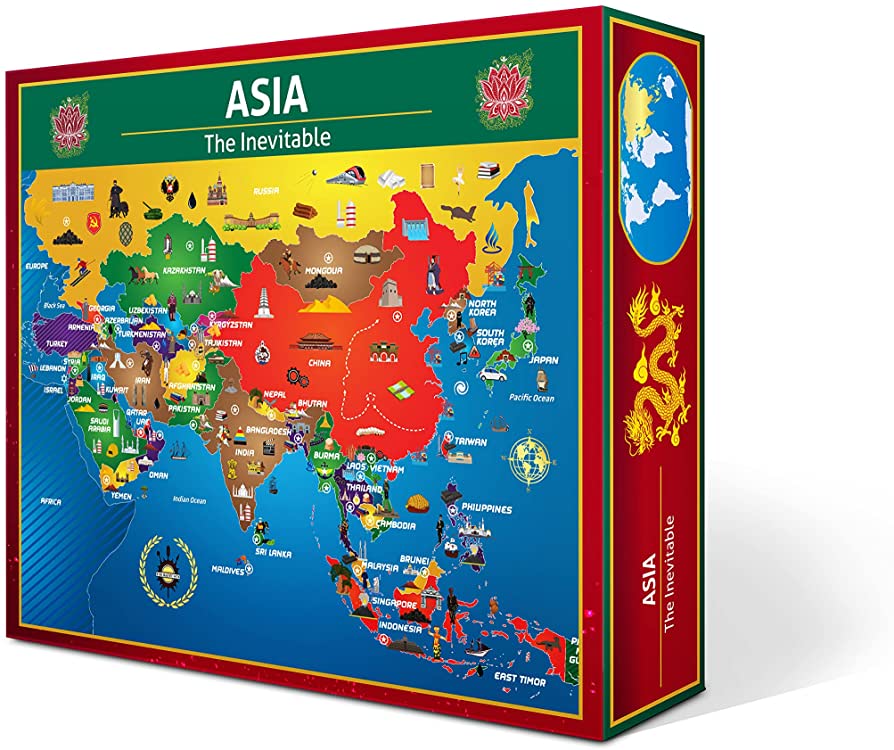Puzzle games have a universal appeal and are enjoyed across the world. The unique elements of the puzzle games reflect the influence of different cultures and geographical regions from which they originated. The history of puzzles dates back centuries, and some of the earliest known puzzle games are believed to have been created over 4,000 years ago. Different cultures have created puzzles that reflect their values and beliefs, using puzzles as a means of socializing, building relationships and gaining knowledge. By exploring these puzzles and their cultural roots, we can better recognize the creativity and ingenuity of our human heritage.
Cultural Influences on Puzzle Games: Discovering the Unique Elements of Global Puzzles
Puzzle games are commonly enjoyed by people of all ages and cultures, and there is a vast range of different types and forms of puzzle games available worldwide. The uniqueness of these puzzles can often be attributed to their cultural origins and influences, as different cultures and geographical regions have their unique perspectives, beliefs, and values that are showcased in their puzzle games. Exploring the cultural influence on puzzles brings us a deeper understanding of the puzzle games that we enjoy and why they are so different from one another. Let’s explore the cultural influences on puzzle games and discover their unique elements.
The Rich History of Puzzles
The history of puzzles dates back centuries, and some of the earliest known puzzle games are believed to have been created over 4,000 years ago. Puzzles have been used as entertainment, educational tools, and even for religious and ceremonial purposes. Different cultures have created puzzles that reflect their values and beliefs, using puzzles as a means of socializing, building relationships and gaining knowledge.
The Influence of Asian Cultures on Puzzle Games
Asian cultures have a rich history of puzzle games that have become popular worldwide. Perhaps the most famous of these is the Japanese Sudoku. However, many other puzzles such as Kakuro, Nonogram and Hanayama have been rooted in Asian culture. The influence of Asian cultures has greatly impacted some of the most popular puzzle games around the world, with their unique gameplay and aesthetics, which depict various cultural influences, including calligraphy, origami and traditional art. These puzzles can require logic and deduction skills, as well as the ability to appreciate the beauty of the design.
The Influence of European Cultures on Puzzle Games
European cultures have influenced the puzzle industry with many notable games such as Rubik’s Cube and the Labyrinth. These games incorporate various elements from European mythology, art, and beliefs. Games like Rubik’s Cube possess an element of mathematical logic, which requires quick thinking to solve its complex puzzle. They often demonstrate artistic designs involving complex shapes and mechanisms.
The Influence of African Cultures on Puzzle Games
Puzzles have always been an important part of African culture. African puzzles demonstrate great creativity, and the designs reflect the rich cultural heritage of different tribes and communities. African puzzles often require players to think out of the box, as they employ creative thinking and problem-solving skills, which makes them extremely challenging. There are puzzles like the Mancala, known around the world and potentially among the oldest games known to be played, whose underlying strategies require deep thinking and culturally oriented understanding of gameplay.
The Influence of South American Cultures on Puzzle Games
South American cultures have contributed to the puzzle industry with games such as the Chilean Sopa De Letras, which involves finding out a set of words hidden in the square grid. Many South American puzzles are based on ancient cultural knowledge, such as the Inca game of Tumi-Isi that involves square tiles with different symbols. These games reflect a strong emphasis on creativity and spirituality, emphasizing knowledge of culture and tradition.
The Influence of North American Cultures on Puzzle Games
North American cultures have developed several unique puzzles that have become popular worldwide, including the word scramble. Other games such as the Indian Navajo Rug Puzzle and the puzzle called Alligator will challenge your problem-solving and pattern recognition abilities. The themes of American puzzle games frequently include cultural symbols of Americana and Native American cultures, which reflect the diverse segments of American culture.
The Influence of Oceanian Cultures on Puzzle Games
As diverse as the cultures of Oceania are, their puzzle games are just as unique. Games like the Maori Tangram emphasize creative thinking and problem-solving skills, while the Fijian Game of Batua and Lovo echoes tribal beliefs and customs. Oceanian puzzle games frequently reflect the natural beauty of the region, along with the religious and spiritual sentiments typical of the countries hosted there.
Conclusion
Puzzle games have a universal appeal and are enjoyed across the world. The unique elements of the puzzle games reflect the influence of different cultures and geographical regions from which they originated. By exploring these puzzles and their cultural roots, we can better recognize the creativity and ingenuity of our human heritage. Whether you are a puzzle game enthusiast or just looking for a unique way to engage with different cultures, exploring the cultural influences on puzzle games will undoubtedly provide a better appreciation and understanding of these games.
